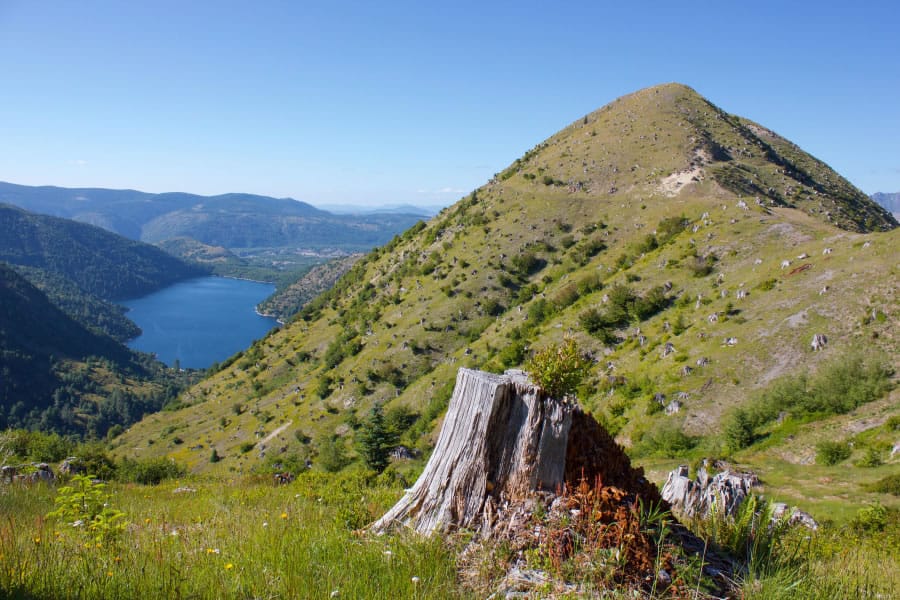As we attempted to decipher a foot path out of the spiderweb of elk trails that sprawled across the slope, I reflected on the term “un-maintained.”
The Forest Service provided that simple warning in its description of the 221 Trail to Castle Lake: “Area Status: Unknown.” We stood on a grassy ridge along the western edge of Mount St. Helens’ blast zone after concluding a fruitless search for the trail. Trail or no, a slowly settling sun and the need for water pushed us to move on.
Far to our right, Coldwater Peak, Mount Margaret and Mount Whittier defined the backcountry that absorbed the 1980 blast. In the distance, the summit of Mount Adams rose above Studebaker Ridge’s sloping shoulder.
Just off to the west, the sound of a hidden waterfall drifted out from a bowl at the apex of the ridge we stood on. A gentle wind bounced brown grasses and Indian paintbrush around our feet as the declining sunlight bent the scene’s hues toward red. On that 4,000-foot ridge it was difficult to summon any frustration for the disappearing trail and the thirst.



